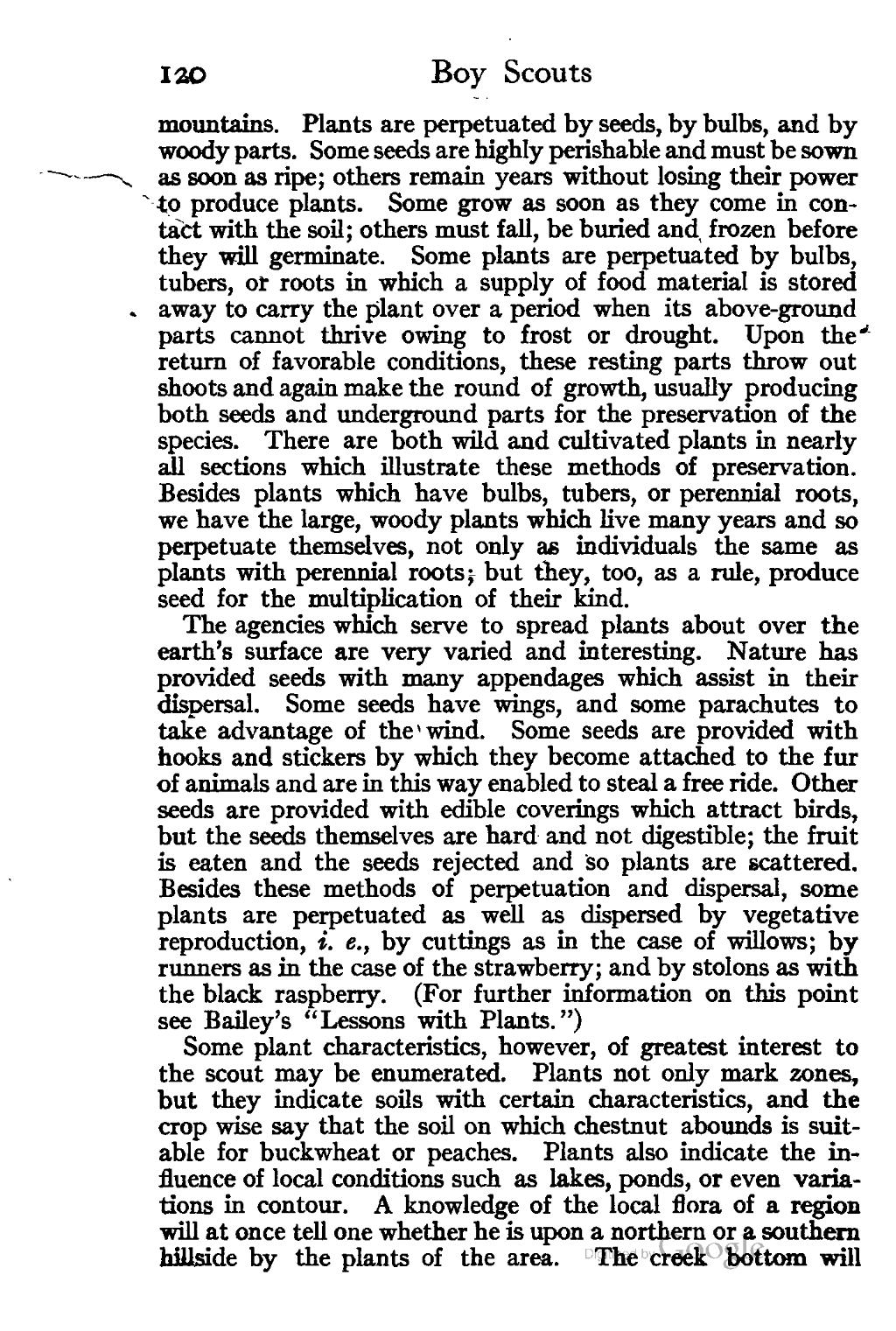I? Boy Scouts mountains. Plants are perpetuated by seeds, by bulbs, and by woody parts. Some seeds are highly perishable and must be sown as soon as ripe; others remain years without losing their power ' tO produce plants. Some grow as soon as they come in con- ta'ct with the soil; others must fall, be buried and, frozen before they ? germinate. Some plants axe perpetuated by bulbs, tubers, or roots in which a supply of food material is stored away to carry the plant over a period when its above-ground parts cannot thrive owing to frost or drought. Upon the '- return of favorable conditions, these resting parts throw out shoots and again make the round of growth, usually producing both seeds and underground paxts for the preservation of the species. There are both wild and cultivated plants in nearly all sections which illustrate these methods of preservation. Besides plants which have bulbs, tubers, or perennial roots, we have the large, woody plants which live many years and so perpetuate themselves, not only as individuals the same as plants with perennial roots ? but they, too, as a rule, produce seed for the multiplication of their k/nd. The agencies which serve to spread plants about over the earth's surface are very varied and interesting. Nature has provided seeds with many appendages which assist in their dispersal. Some seeds have wings, and some parachutes to take advantage of the' wind. Some seeds axe provided with hooks and stickers by which they become attached to the fur of animals and are in this way enabled to steal a free ride. Other seeds axe provided with edible coverings which attract birds, but the seeds themselves are hard. and not digestible; the fruit is eaten and the seeds rejected and ?o plants are scattered. Besides these methods of perpetuation and dispersal, some plants are perpetuated as well as dispersed by vegetative reproduction, i.e., by cuttings as in the case of willows; by runners as in the case of the strawberry; and by stolons as with the black raspberry. (For further information on this point see Bailey's "Lessons with Plants.") Some plant characteristics, however, of greatest interest to the scout may be enumerated. Plants not only mark zones, but they indicate soils with certain characteristics, and the crop wise say that the soft on which chestnut abounds is suit- able for buckwheat or peaches. Plants also indicate the in- fiuence of local conditions such as lakes, ponds, or even varia- tions in contour. A knowledge of the local flora of a region will at once tell one whether he is upon a nort?r?n?or?j?southern hillside by the plants of the area. ?heb??tom will
Stránka:roll 1911.djvu/141
Z thewoodcraft.org
Tato stránka nebyla zkontrolována
